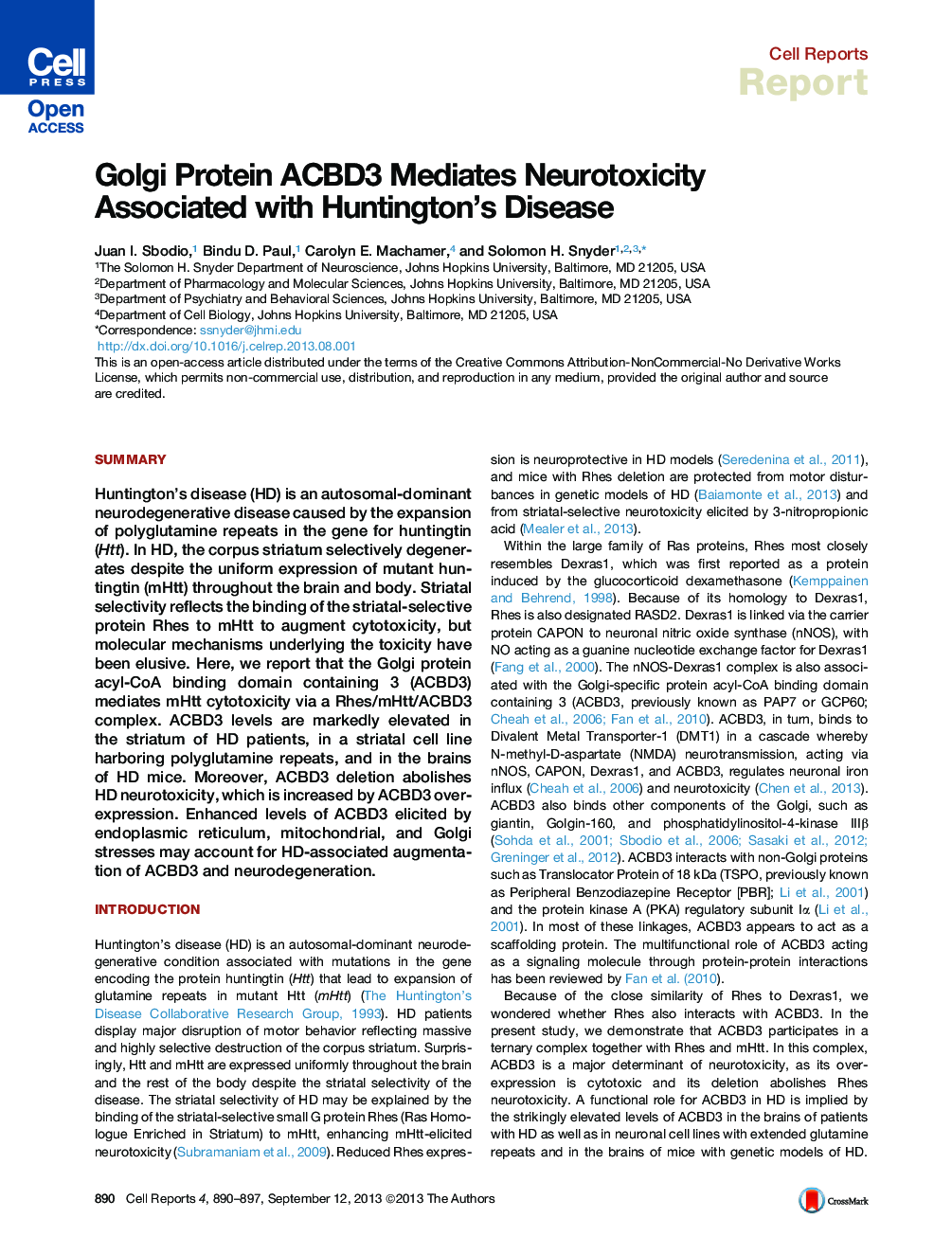| کد مقاله | کد نشریه | سال انتشار | مقاله انگلیسی | نسخه تمام متن |
|---|---|---|---|---|
| 2040802 | 1073130 | 2013 | 8 صفحه PDF | دانلود رایگان |

• ACBD3 is upregulated in Huntington’s disease
• ACBD3 interacts with Rhes and mutant huntingtin
• ACBD3 augments Rhes-induced cytotoxicity in HD
• ACBD3 is induced during cellular stress such as ER, Golgi, and mitochondrial stress
SummaryHuntington’s disease (HD) is an autosomal-dominant neurodegenerative disease caused by the expansion of polyglutamine repeats in the gene for huntingtin (Htt). In HD, the corpus striatum selectively degenerates despite the uniform expression of mutant huntingtin (mHtt) throughout the brain and body. Striatal selectivity reflects the binding of the striatal-selective protein Rhes to mHtt to augment cytotoxicity, but molecular mechanisms underlying the toxicity have been elusive. Here, we report that the Golgi protein acyl-CoA binding domain containing 3 (ACBD3) mediates mHtt cytotoxicity via a Rhes/mHtt/ACBD3 complex. ACBD3 levels are markedly elevated in the striatum of HD patients, in a striatal cell line harboring polyglutamine repeats, and in the brains of HD mice. Moreover, ACBD3 deletion abolishes HD neurotoxicity, which is increased by ACBD3 overexpression. Enhanced levels of ACBD3 elicited by endoplasmic reticulum, mitochondrial, and Golgi stresses may account for HD-associated augmentation of ACBD3 and neurodegeneration.
Graphical AbstractFigure optionsDownload as PowerPoint slide
Journal: - Volume 4, Issue 5, 12 September 2013, Pages 890–897